Seven Questions Over Breakfast with John Parra
 September 24th, 2013 by jules
September 24th, 2013 by jules
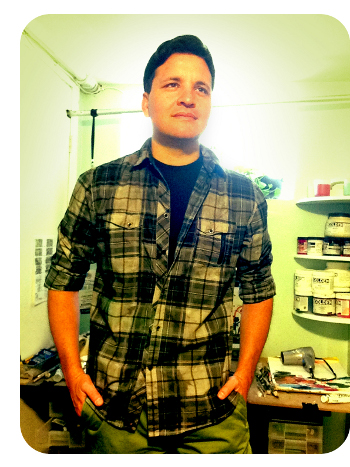 It’s a pleasure to welcome illustrator John Parra to 7-Imp this morning. Parra’s bright folk-art-esque illustrations, rendered via acrylics on wood and often reflecting Mexican heritage and culture, have appeared in a handful of picture books since 2005, all listed below. This year readers saw his artwork in Roseanne Greenfield Thong’s Round is a Tortilla, released by Chronicle Books in March.
It’s a pleasure to welcome illustrator John Parra to 7-Imp this morning. Parra’s bright folk-art-esque illustrations, rendered via acrylics on wood and often reflecting Mexican heritage and culture, have appeared in a handful of picture books since 2005, all listed below. This year readers saw his artwork in Roseanne Greenfield Thong’s Round is a Tortilla, released by Chronicle Books in March.
“At home,” John tells me, “my breakfast-of-choice is Honey Bunches of Oats cereal with Bustelo coffee in the morning. On the weekends my wife, Maria, makes great eggs and pancakes. When I’m visiting family in San Diego, a good bowl of pesole soup in the morning will do wonders, but the best breakfast I ever had was three or four years ago at a diner in Pomona, California. A good friend, Mark, took my wife and me to it. We all ordered the recommended egg and shrimp omelet that was filled with delicious cheese, avocado and salsa. It sounds simple but was truly sublime to taste.”
Do I get to pick? I would love to try the pesole soup, so we’ll have the cyber-soup for this cyber-breakfast. (But also the Bustelo coffee! Must have the coffee.)
Let’s get right to it, ’cause John shares lots of art this morning.
I thank him for visiting.
Jules: Are you an illustrator or author/illustrator?
John: Illustrator.
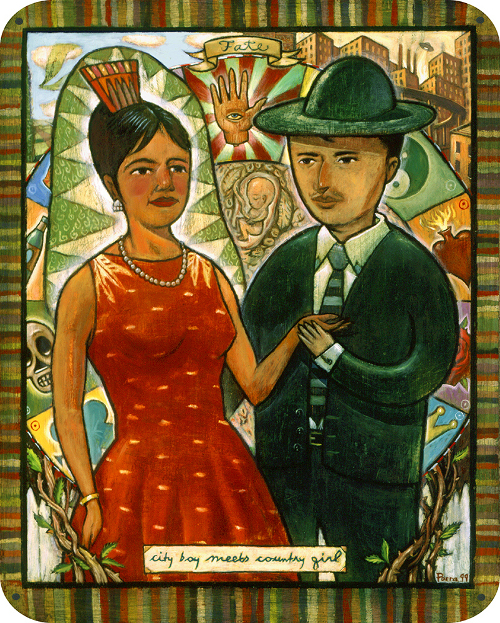
Jules: Can you list your books-to-date?
John:
- Green is a Chile Pepper (2014), written by Roseanne Greenfield Thong, Chronicle Books
- Round is a Tortilla (2013), written by Roseanne Greenfield Thong, Chronicle Books
- When Thunder Comes: Poems for Civil Rights Leaders (2012), written by J. Patrick Lewis, with a collaborative showcase of six artist illustrators, Chronicle Books
- Waiting for the Biblioburro (2011), written by Monica Brown, Tricycle Press / Random House
- Gracias / Thanks (2009), written by Pat Mora, Lee & Low Books
- P is for Piñata, A Mexico Alphabet (2007), written by Tony Johnston, Sleeping Bear Press
- My Name is / Me Llamo Gabriela (2005), written by Monica Brown, Luna Rising
Jules: What is your usual medium?
John: Acrylic paint on illustration board or wood.
(Click to enlarge)

Jules: Where are your stompin’ grounds?
John: My wife and I reside in our home in Queens, New York. I came to New York thirteen years ago in 2000, via a cross country trip from Southern California, where I grew up.
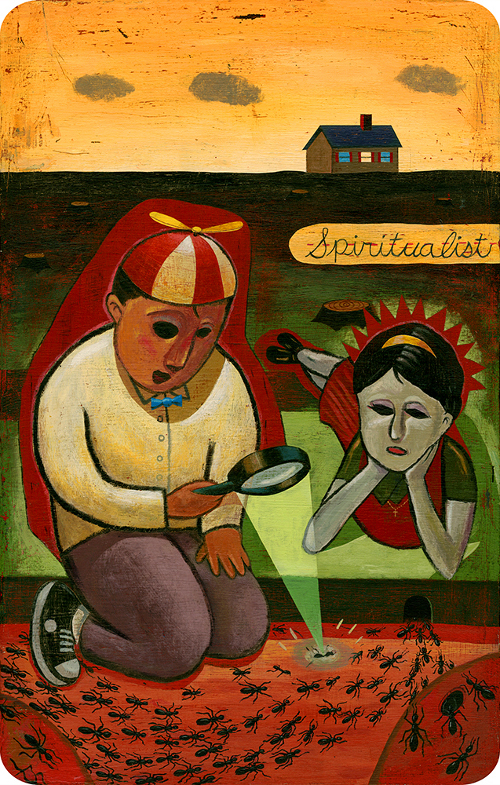
Jules: Can you tell me about your road to publication?
John: I was a commercial illustrator for many years, working for magazines, record companies, and advertising agencies, which I still do, but illustrating a children’s book was not a field I pursued early in my career. It all started when an editor/art director at a small publishing company, Luna Rising, had seen my work and contacted me to ask if I’d be interested in doing a book. Much of my work already used themes of family, childhood, and Latino culture, plus my color palette made it a good match for doing a children’s book, so I decided to accept. The first book was called My Name is Gabriela/ Me llamo Gabriela [art and cover pictured below], written by Monica Brown, that tells the story of Gabriela Mistral, a famous poet from Chile, who was the first Latina woman to receive the Nobel Prize in Literature. As Monica Brown revealed to me later, this was the first children’s book story she ever wrote, although the second of hers published, which is kind of cool in that this project was a first of sorts for both of us.
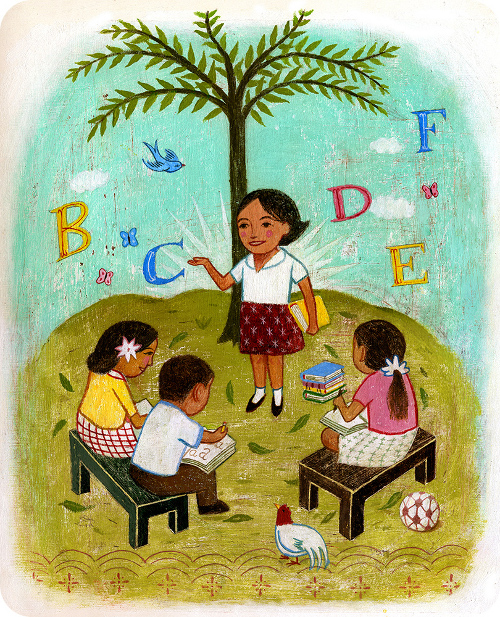


Jules: Can you please point readers to your web site and/or blog?
John: www.johnparraart.com; www.facebook.com/john.parra.14; www.goodreads.com/author/show/2384394.John_Parra.
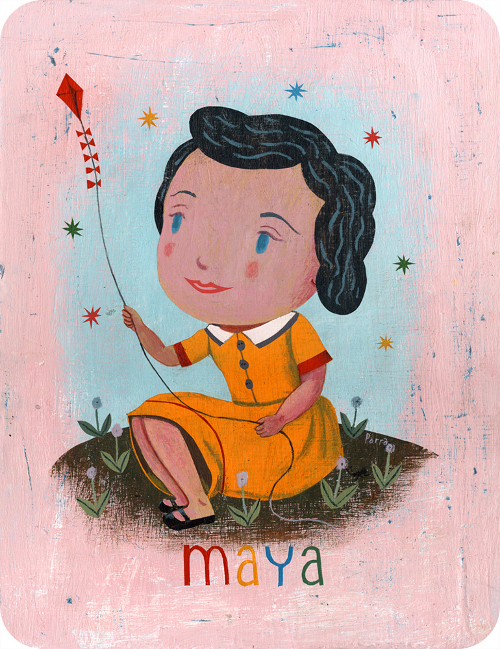
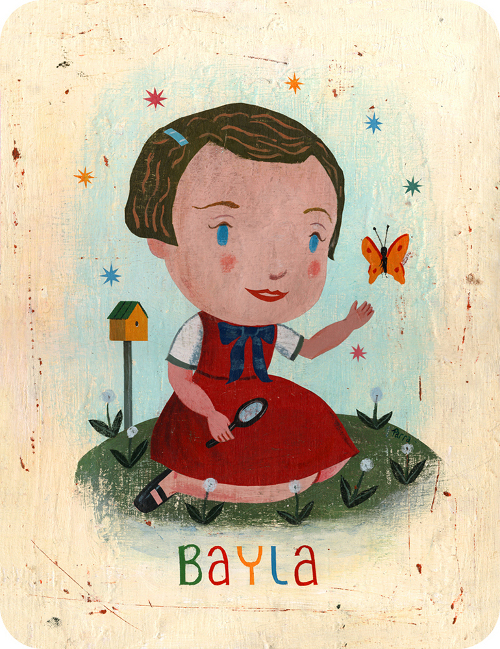
Jules: If you do school visits, tell me what they’re like.
John: My school visits begin with an introduction of who I am and how I became an artist/illustrator, plus what my inspirations are and the processes I use to create my art. I then love to ask the audience what they think about art and why it might be important. This is one of my favorite parts, because their responses are so creative, thoughtful, and diverse. It also creates a dialogue to learn from each other and break down some of the mysteries of what art is.
The next phase is to include groups of students in art workshops. These hands on projects can be a collaborative effort to create a mural design or individual assignments to develop story characters. We use books and stories, as well as the students own backgrounds and interests, for inspiration and creativity. It’s an amazing learning experience that is unique each time I do it.
Gracias / Thanks (Lee & Low, 2009)
(Click each spread to enlarge)
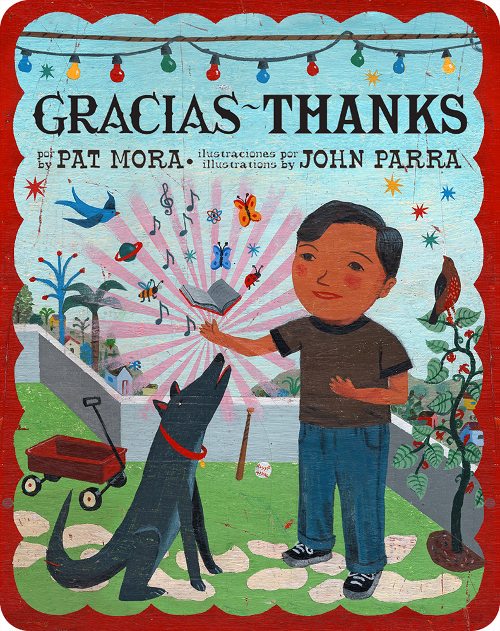
7-Imp: If you teach illustration, by chance, tell me how that influences your work as an illustrator.
John: I have taught some illustration workshops over the years. I think seeing how students approach projects differently, whether it’s in concept and/or execution, inspires me to experiment with my approach in creating art.
Round is a Tortilla (Chronicle, 2013)
(Click each spread to enlarge)
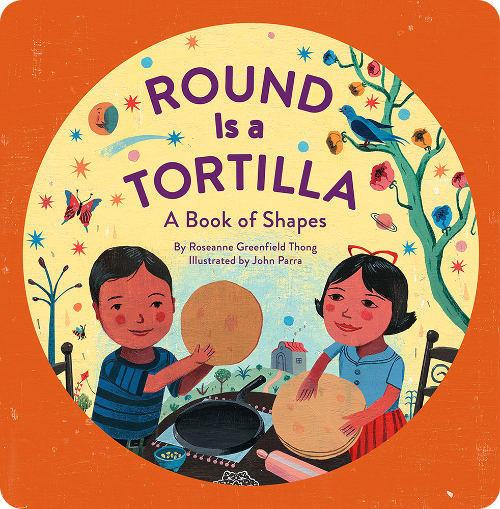
Jules: Any new titles/projects you might be working on now that you can tell me about?
John: I just finished my next children’s book, Green is a Chili Pepper, this month for Chronicle Books. The story follows a Latino family, whose kids examine different colors, foods, and objects that appear in their everyday lives. It will be available 2014. It is also the companion book for my most newly published work, Round is a Tortilla, both wonderfully written by author Roseanne Greenfield Thong. Another project I have recently completed were two spread illustrations for National Geographic’s Kids’ magazine on the concepts of home, travel, and youth in Latin America.
As for future art projects, they include: Working with El Museo del Barrio of New York to design the 2014 Three Kings’ Day Celebration and parade poster, a new children’s book offer from Chronicle Books, some work with Boston Children’s Hospital, plus a few art exhibitions of original work in Brazil, Oklahoma, and Virginia.
P is for Piñata, A Mexico Alphabet (Sleeping Bear Press, 2007)
(Click each spread to enlarge)
 Coffee’s on, and it’s time to get a bit more detailed with seven questions over breakfast. I thank John again for visiting 7-Imp.
Coffee’s on, and it’s time to get a bit more detailed with seven questions over breakfast. I thank John again for visiting 7-Imp.
1. Jules: What exactly is your process when you are illustrating a book? You can start wherever you’d like when answering: getting initial ideas, starting to illustrate, or even what it’s like under deadline, etc. Do you outline a great deal of the book before you illustrate or just let your muse lead you on and see where you end up?
John: For me the process to illustrate a children’s book begins when I receive an email or call from an editor or art director at a publishing house, who believes that my art would be a good match for a manuscript they are producing. Since a book can take me around six to seven months to complete, I think about the project and potential. After reviewing, accepting, reading, and re-reading the story, I begin to do my homework by researching and looking for related references, such as images and text pertaining to any elements described in the story. Through this technique I begin to enhance my visualization and feelings for the book. It also helps maintain some accuracy if I’m working with biographies and specific geographic locations as they relate to people, environments, historical elements, or other appropriate material, although artistic license will most certainly come into play.
Waiting for the Biblioburro
(Tricyle Press/Random House, 2011)
(Click each to enlarge)
Once the research is done, I begin sketching characters and environments looking for pacing and story arcs. Some pages I see clearly in my mind, while others require much more work. Once I develop all the images, I send them to be approved by the art director. After a few rounds and revisions, I am ready to paint. I have a technique of layering paint and scratching and sanding into them to give them a worn look. After many weeks and all the art is completed, the work goes off to the publisher to be scanned and prepped for type and printing. Then, many months later, a special package shows up at my door with my new book and a note stating: Advanced Copy. I smile and know that all is good with the world.
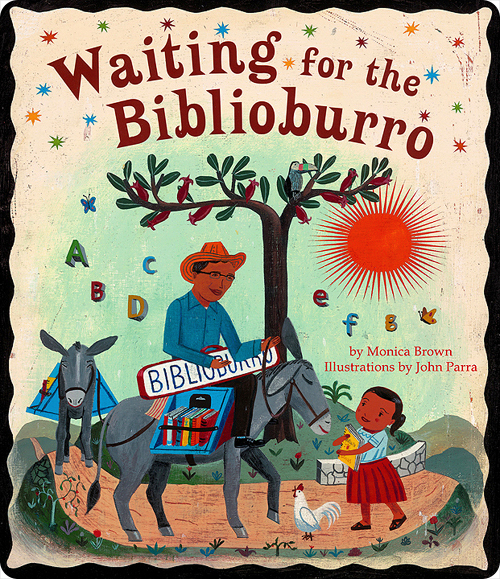
Waiting for the Biblioburro
2. Jules: Describe your studio or usual work space.
John: My art studio is conveniently located in my home. There are books and sketches everywhere, along with my painting table, computer, and a collection of guitars. There are, of course, many paintings from past projects, as well as from artist friends, filling the walls. I love to work in the morning through mid-day. This is my most productive time. However, many of my artistic ideas frequently catch up with me just when I’m ready to fall asleep. For that reason, I usually keep a pen and paper by my side, in case I need to jot down any thoughts of interest.
3. Jules: As a book-lover, it interests me: What books or authors and/or illustrators influenced you as an early reader?
John: As a very young child, I clearly remember my mom taking my brothers and I to the Goleta and Santa Barbara Libraries in California. We would find books, like Mike Mulligan and His Steam Shovel by Virginia Lee Burton, Curious George by H.A. & Margret Rey, and Little Bear, [illustrated] by Maurice Sendak. Books on construction site vehicles or train engines and railroads were also high on our list. On many occasions they had these great story time events at the library. I listened and was introduced to many more books there. All of these books and readings sparked my imagination and inspired me with creativity and positive thinking.
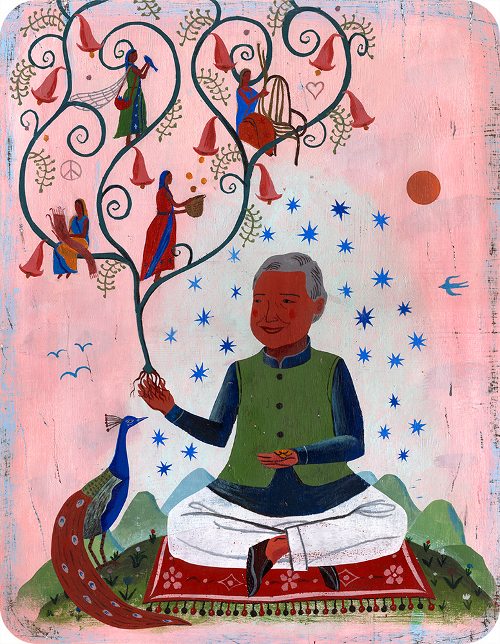
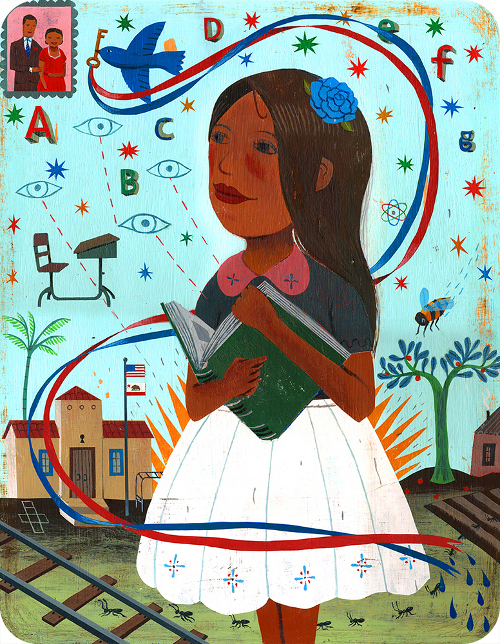
When Thunder Comes: Poems for Civil Rights Leaders (Chronicle, 2012)

4. Jules: If you could have three (living) authors or illustrators—whom you have not yet met—over for coffee or a glass of rich, red wine, whom would you choose? (Some people cheat and list deceased authors/illustrators. I won’t tell.)
John: One of the best things about working in the field of book publishing is being introduced to many of my favorite current illustrators and authors. Rafael López, Yuyi Morales, David Díaz, Monica Brown, and Alma Flor Ada are a just a few that I have had the privilege of meeting. But for those still on my bucket list for a drink and dinner party, I would have to include Sherman Alexie, Sandra Cisneros, and Barbara Kingsolver, plus a few acceptable gate-crashers, such as Stephen King, Carmen Llomas Garza, and Jeannette Walls. They would all be more than welcomed.

5. Jules: What is currently in rotation on your iPod or loaded in your CD player? Do you listen to music while you create books?
John: Music has been a big part of my life, and I definitely use it to set the mood when working on art. Currently on my iPhone or home stereo I listen to: The Airborne Toxic Event, Sixto “Sugarman” Rodríguez, Los Lobos, Edward Sharpe and the Magnetic Zeros, The Gaslight Anthem, Nick Cave and the Bad Seeds, Imagine Dragons, The Chevin, Chet Baker, Etta James, Norah Jones, Ximena Sariñana, Sade, Bob Marley, Maná, Gipsy Kings, Frankie Ruiz, La Lupe, Manic Hispanic, Good Riddance, Santana, Billy Joel, Led Zeppelin, The Beatles, and pretty much any ’80s music.


6. Jules: What’s one thing that most people don’t know about you?
John: When I was in art school, I played guitar in a few bands, mostly punk rock and ska music. We were close to Los Angeles, so we performed in clubs, like The Whiskey and The Roxy Theater in Hollywood. I have many great memories of those shows. I continued practicing guitar when I moved here to New York and recently just joined a new group for practice and to have fun.
7. 7-Imp: Is there something you wish interviewers would ask you — but never do? Feel free to ask and respond here.
John: Have you ever completely screwed up a painting job before?
Yep. I pout a bit, pick myself up and brush myself off, and then start again.
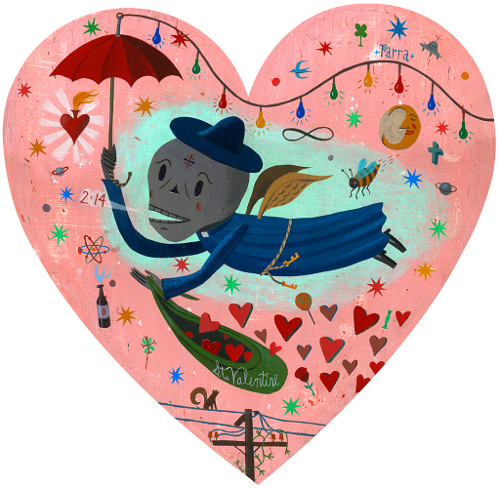
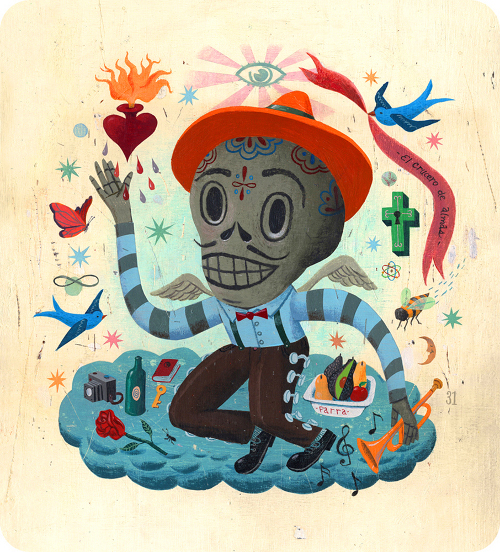

Jules: What is your favorite word?
John: I love saying made-up words. My wife is very good at creating new ones, like: Took-a-tuba.
Jules: What is your least favorite word?
John: “Normal” (as in, “Why can’t you act more normal?”).
Jules: What turns you on creatively, spiritually or emotionally?
John: Music, food, traveling, art, family, spirituality, science, reading, doing good.
Jules: What turns you off?
John: Fear and arrogance.
7-Imp: What is your favorite curse word? (optional)
John: “Híjole!”
Jules: What sound or noise do you love?
John: Live music.
Jules: What sound or noise do you hate?
John: Cell phones in a movie theater.
Jules: What profession other than your own would you like to attempt?
John: Growing up, I worked for my father’s landscape and construction company, doing many of the layout designs and plans for his projects. I enjoyed it very much and thought of pursuing a career as a landscape architect.
Jules: What profession would you not like to do?
John: Politician.
Jules: If Heaven exists, what would you like to hear God say when you arrive at the Pearly Gates?
John: I fear when I arrive at the Pearly Gates there will be massive amounts of paperwork to fill out. Hopefully though, once this is all taken care of, a little recognition nod from the big guy/gal would be great.
All artwork and images are used with permission of John Parra.
The spiffy and slightly sinister gentleman introducing the Pivot Questionnaire is Alfred, © 2009 Matt Phelan.
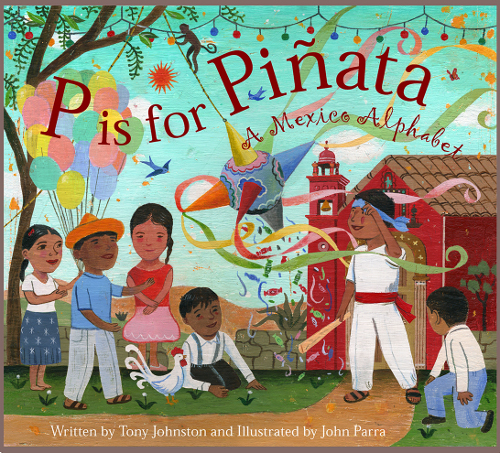

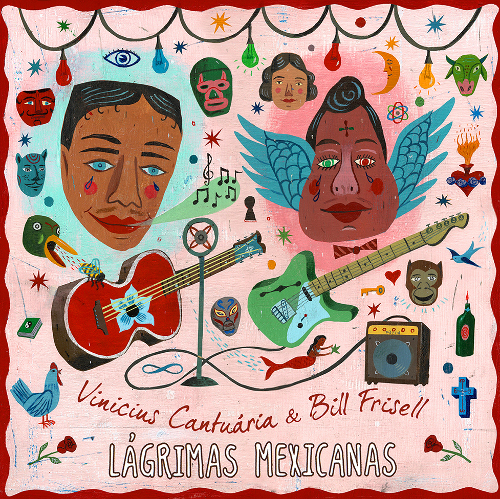
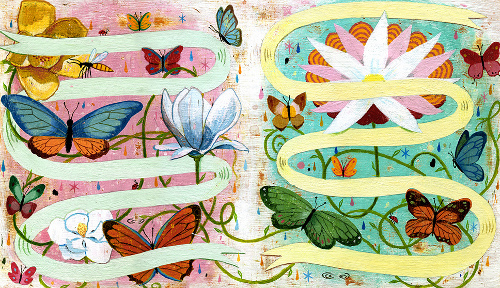
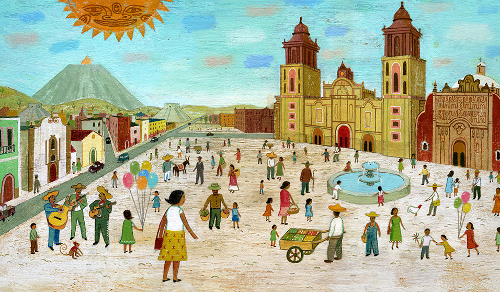
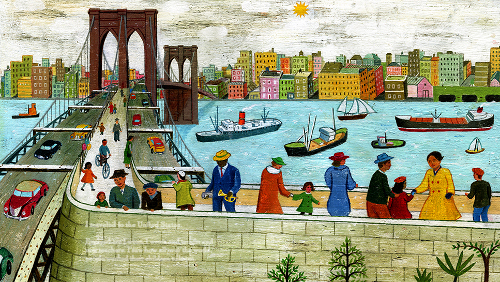

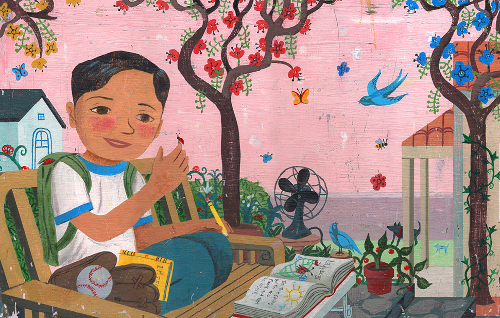




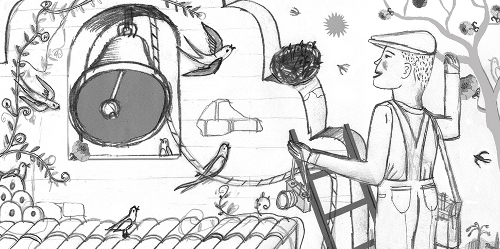
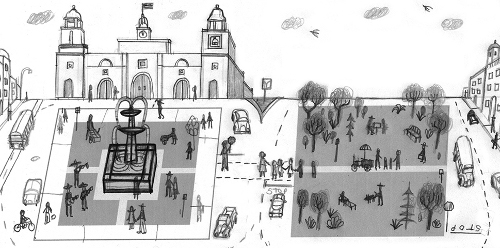
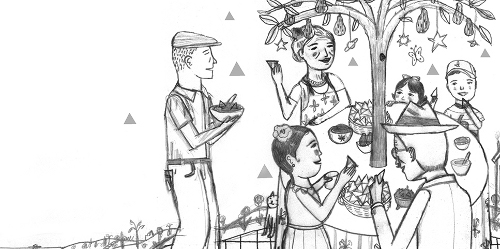
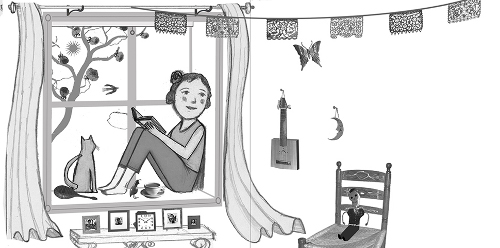
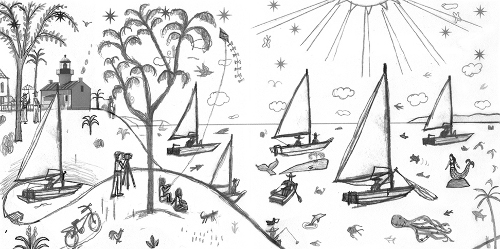
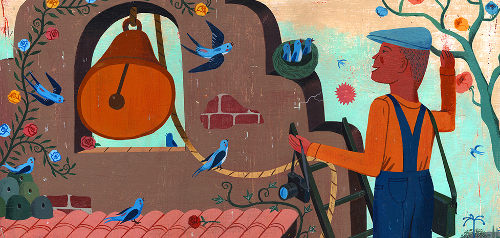
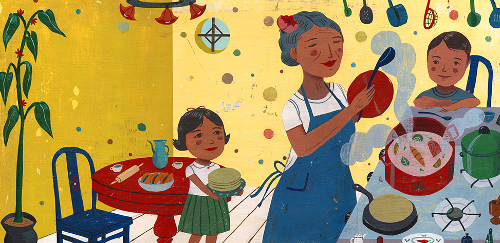
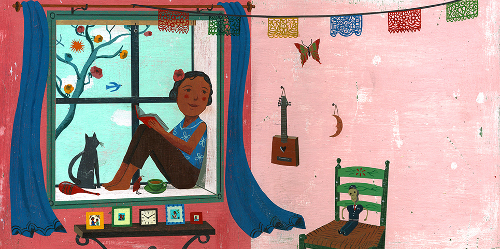
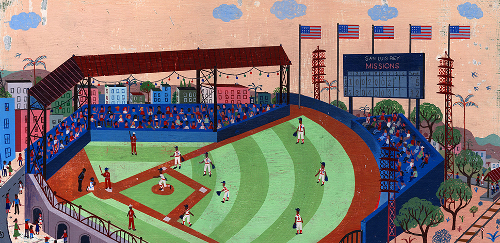

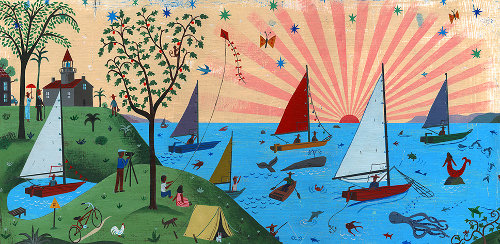
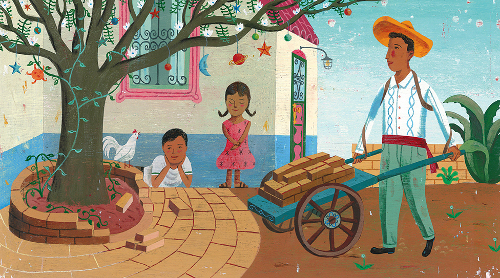

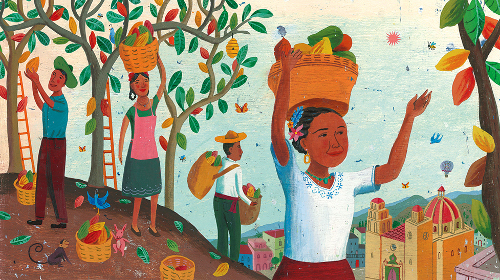
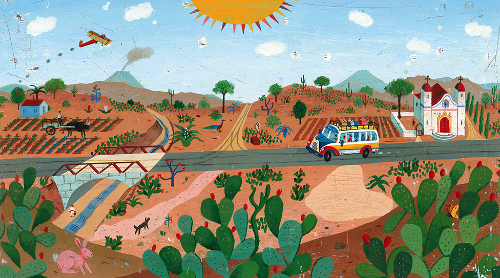
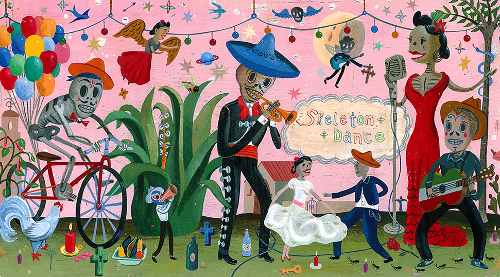

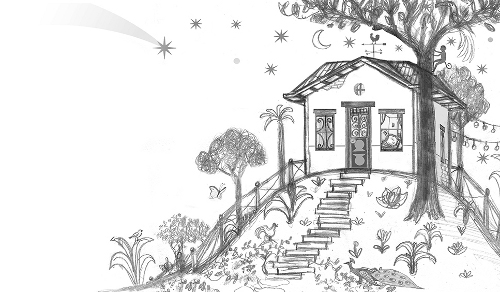
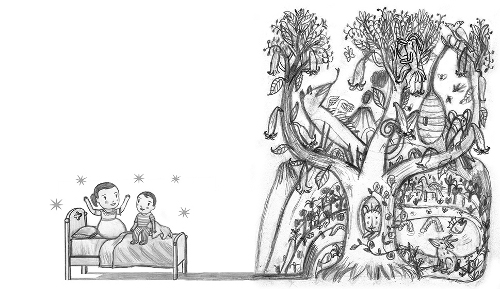
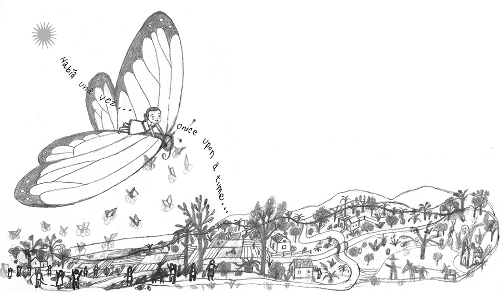
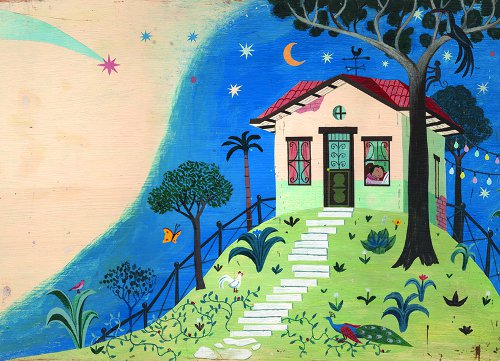

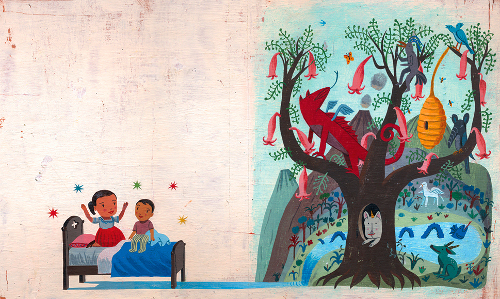
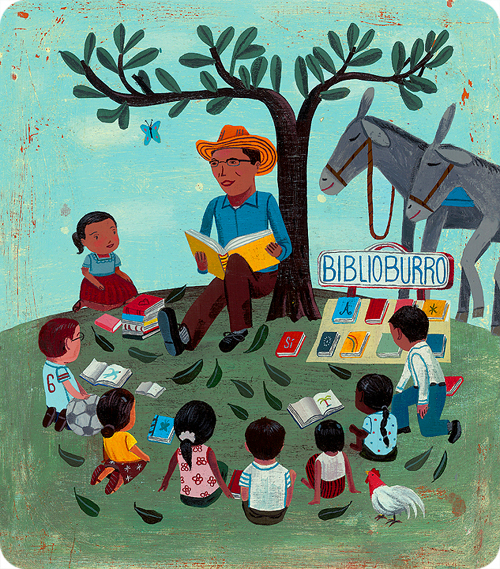

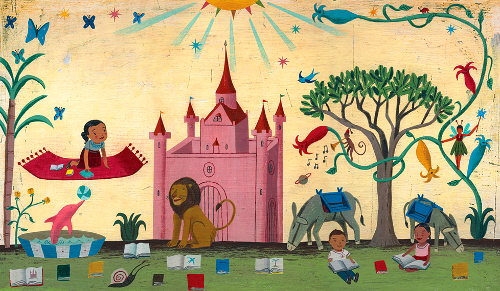



Big thanks for this great interview! My joy and admiration for John Parra’s work grows by leaps and bounds the more I see. I love his imagery and palette. I gave a whoop when I saw the guitars.
WOW!! What a fabulous, wall-to-wall interview! I’m a great admirer of John’s work. He’s also a super nice guy, so there’s that too. Well deserved acclaim. Congratulations to Jules and John for this fine collaboration!
Beautiful, stirring, sparkling!
Such gorgeous palettes.
Very much enjoyed reading about John’s journey and especially his process. His work, so colourful and vibrant, shines from the page and brings the warmth of the South into a chilly Maine studio this morning. I admire his style and voice which is so present in all his work. And I love his cozy studio that must ring with the sound of his guitars!
Fabulous interview. Fantastic to learn about Parra. So talented.
[…] got enough of seeing his work, you’re in luck. A recent interview with him over at my favourite picture book related blog features a fabulous collection of art work from many of his books and projects, along with a […]
[…] Phil Bildner Illustrator: John Parra (interview at 7’imp) Publisher: Chronicle Books, 2015 Book Type: Fiction Ages: 5-8 Themes: […]
[…] http://blaine.org/sevenimpossiblethings/?p=3156 […]